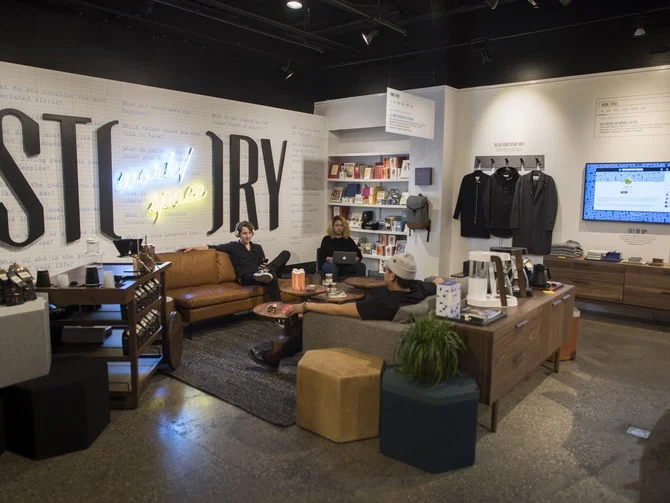David Dewane and Aaron Dignan, who worked with Story founder Rachel Shechtman on this season's iteration of the space.
How much time per day do you spend working? No, not at work, but actually, honest-to-God, head-to-the-ground entrenched in actively doing work. For most who work standard 40-hour (or 50- or 60-hour) workweeks, the answer is much lower than what would show on a time sheet. A study by Atlassian estimates that less than 60 percent of the average workday is spent productively, with the rest of the time devoted to distractions, socializing, and aimless office tasks, while another 2014 study by AtTask and Harris Interactive says it's about 40 percent. According to one British report, only two hours and 53 minutes of an eight-hour workday are spent actually working. Though the numbers vary, one thing is certain: Our time at work, where we spend the majority of our lives, is not productive. So what if we could use design to optimize those precious hours?
That's the idea behind the latest iteration of Story, Manhattan's rotating gallery/shop (and one of the city's first—and best—examples of an experimental retail concept). For its new installation, Work/Space, opening today, founder Rachel Shechtman enlisted Chicago architect David Dewane to build out his concept of the Eudaimonia Machine, a precise work space layout based on Aristotle's concept of eudaimonia, meaning the epitome of human capability.
The office, furnished by Blu Dot, with a data-driven art installation by Giorgia Lupi in the background.
"Eudaimonia describes the highest state of flourishing," Dewane explains as he leads me through Story on the day before opening. The space is abuzz with activity as its many collaborators make last-minute adjustments and test out various stations. "For example," Dewane says as he picks up a notebook by School of Life, the London-based company that focuses on teaching emotional intelligence in the workplace (and is making its U.S. debut at Story), "eudaimonia for a knife is being sharp and cutting. If it’s dull or just resting on the counter, it’s not achieving its highest state. So what is that for a human?"




